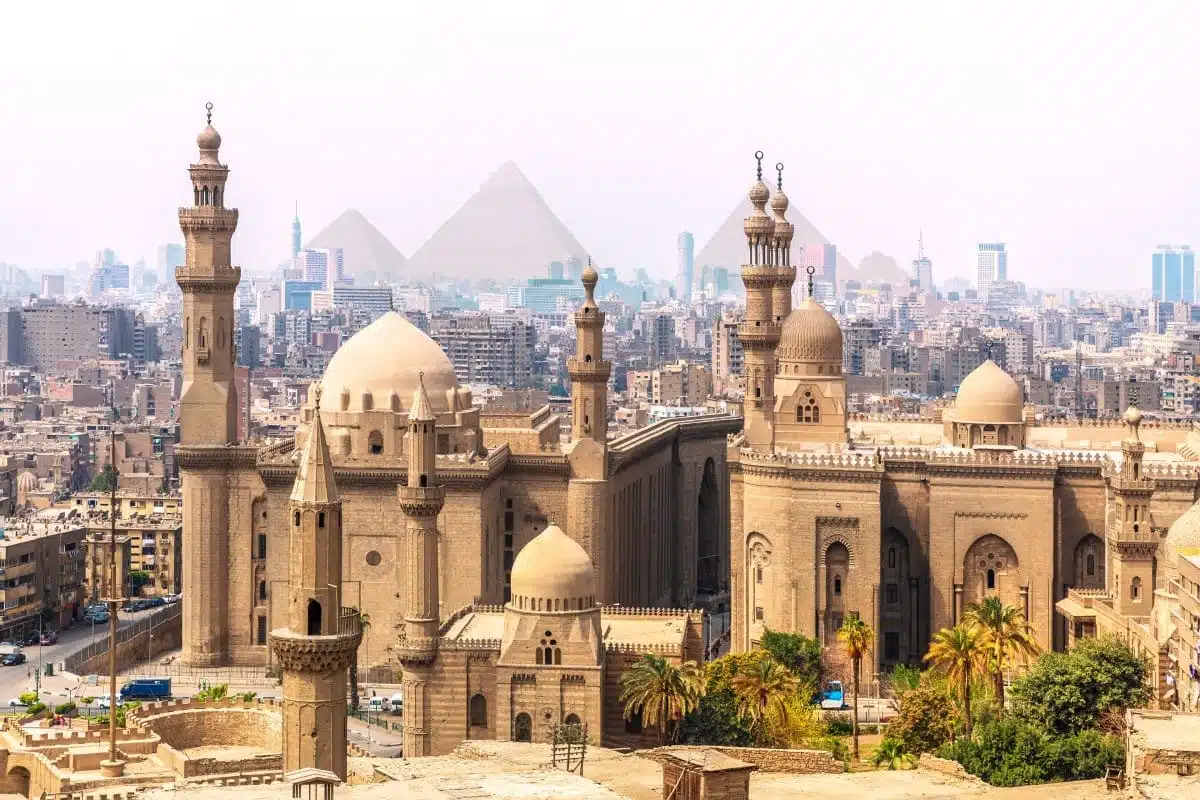Cairo, the sprawling capital of Egypt, is where ancient history and modern life converge. Beyond the shadow of the iconic pyramids, Cairo’s streets buzz with contemporary culture, yet they’re also a canvas displaying the rich tapestry of Egypt’s millennia-old history. This guide explores the cultural treasures of Cairo, from world-renowned monuments to hidden gems like the City of the Dead and the intriguing area known as Rubbish City. Each destination offers a unique glimpse into the past and present of this fascinating city.
Brief History of Cairo
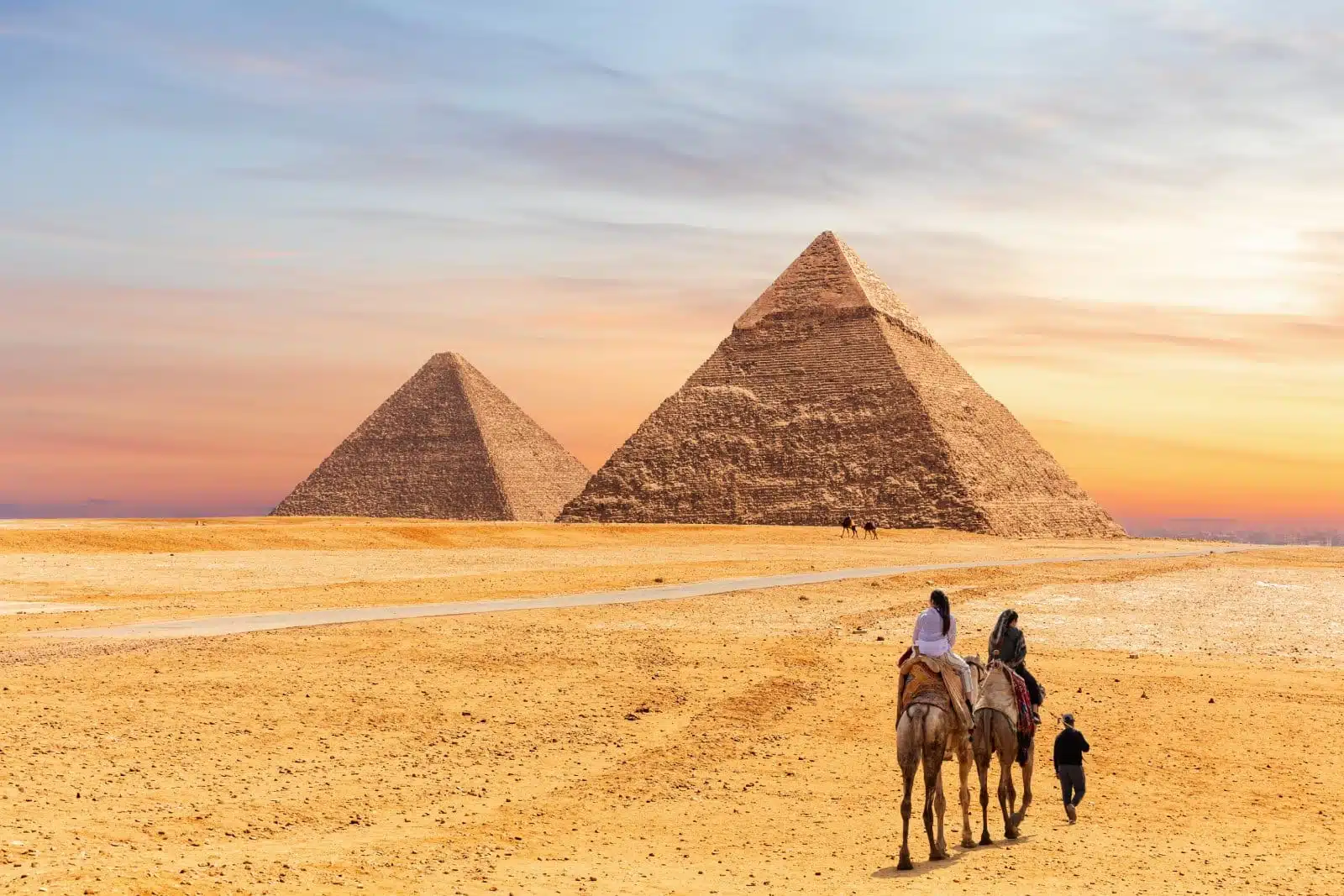
Image Credit: Shutterstock / AlexAnton
Cairo, the capital of Egypt, has a rich history that spans thousands of years, reflecting its role as a center of civilization, culture, and political power. Founded in the 10th century by the Fatimid dynasty, Cairo was established near the ancient city of Memphis and the Giza Pyramids, making it a strategic and cultural hub. The city’s name, “Al-Qāhirah,” translates to “The Victorious,” indicating its historical significance and enduring legacy.
Historically, Cairo has been influenced by various rulers and empires, including the Ayyubids, Mamluks, Ottomans, and the British colonial administration, each contributing to its architectural and cultural landscape. The Ayyubid period saw the construction of the Cairo Citadel, a key military and governmental site, while the Mamluk era is noted for its architectural advancements, particularly in Islamic art and mosque construction.
The Ottoman occupation introduced administrative changes, left architectural marks, and led to economic challenges. The 19th century under Muhammad Ali Pasha marked a modernization era, with significant infrastructure development and urban expansion. The British occupation further influenced Cairo’s urban landscape and modernization until Egypt’s independence in the 20th century.
Today, Cairo is a vibrant metropolis that blends its ancient heritage with modern life. It serves as Egypt’s political, cultural, and economic center, housing millions of people and attracting tourists worldwide to its historic sites. Cairo’s historical narrative of its resilience and capacity to evolve makes it a unique city with a diverse and rich heritage.
1. The Great Pyramids of Giza and the Sphinx
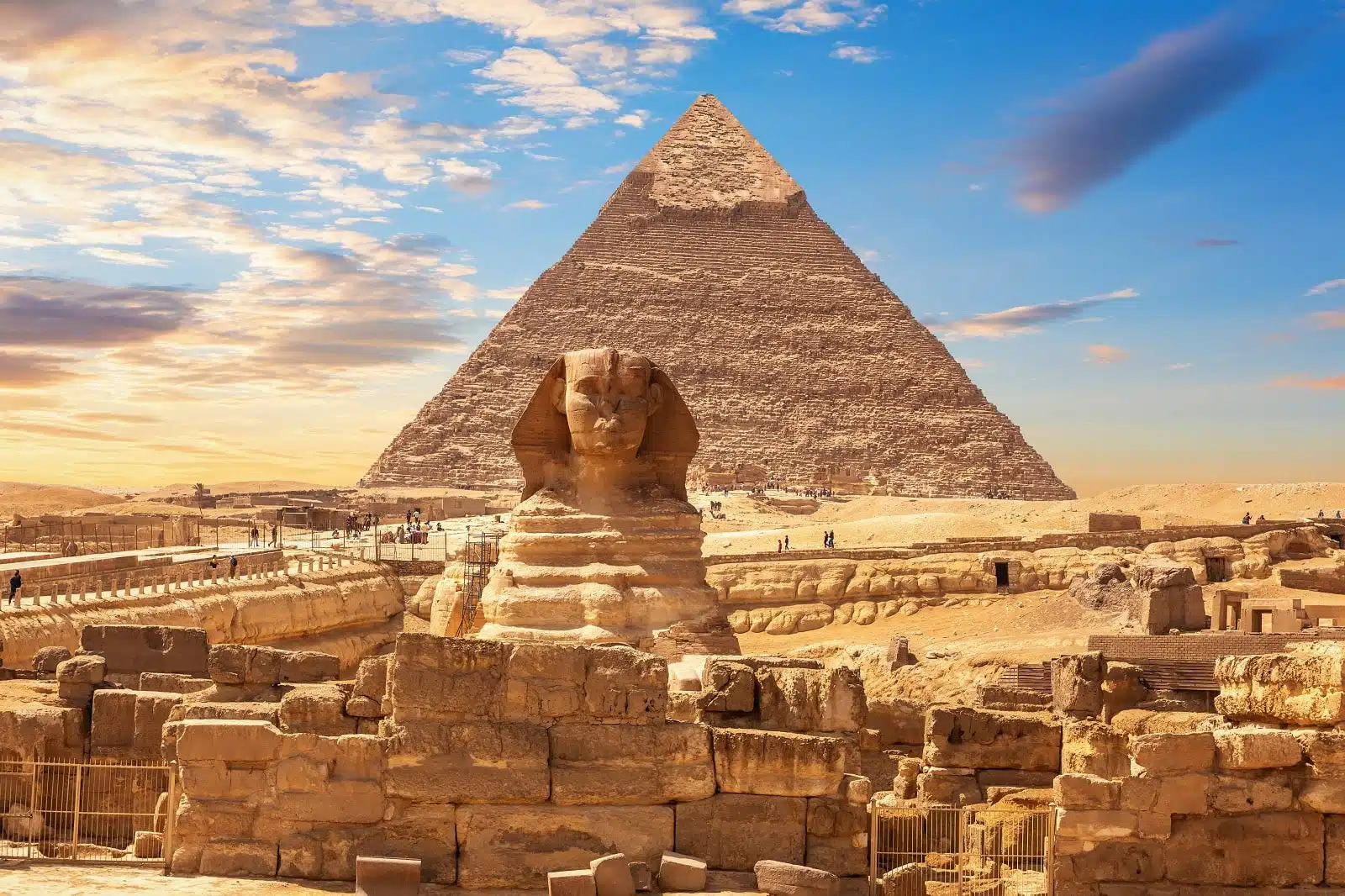
Image Credit: Shutterstock / AlexAnton
The Great Pyramids of Giza, standing on the outskirts of Cairo, showcase ancient Egyptians’ architectural expertise and quest for immortality. This monumental complex, dating back to around 2580–2560 BC during the Fourth Dynasty, includes the Great Pyramid of Khufu, one of the Seven Wonders of the Ancient World, the Pyramid of Khafre, the Pyramid of Menkaure, and the Great Sphinx. The site not only showcases the engineering skills of ancient Egyptians but also offers insights into their religious beliefs, with the pyramids serving as grand tombs to house the pharaohs’ remains and guide their souls to the afterlife. With its lion’s body and human head, the Sphinx stands as a plateau guard, embodying the pharaohs’ strength and wisdom. Exploring this site offers a journey back in time, providing a glimpse into one of history’s most fascinating civilizations.
Insider’s Tip: For a unique experience, visit the pyramids during the sound and light show in the evening. The storytelling adds a magical dimension to these ancient wonders.
2. The Egyptian Museum
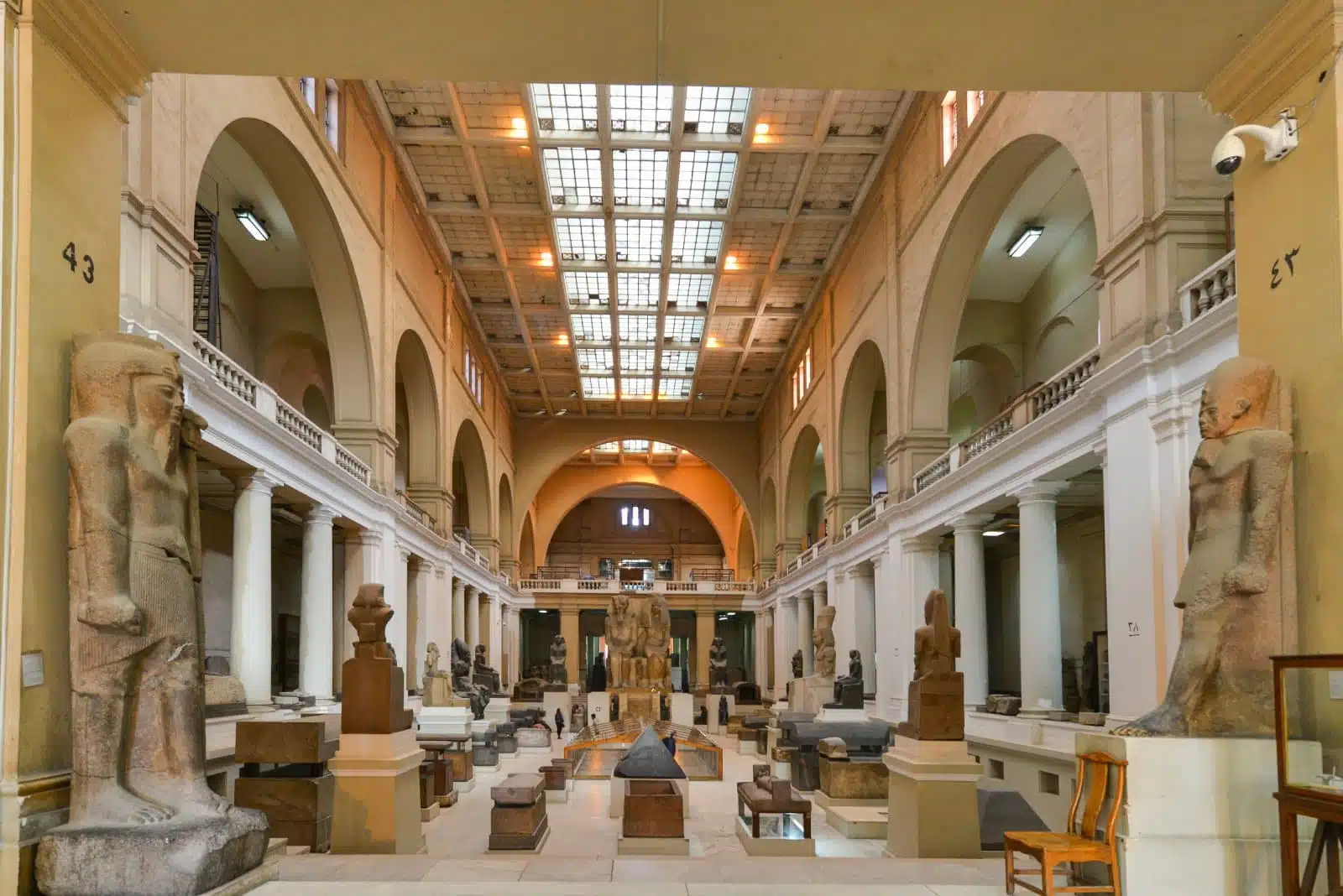
Image Credit: Shutterstock / Orhan Cam
Located in the heart of Cairo, the Egyptian Museum is a treasure trove of artifacts, offering a comprehensive overview of Egyptian history from the Predynastic period through to the Greco-Roman era. With over 120,000 items, the museum boasts an extensive collection that includes mummies, sarcophagi, pottery, jewelry, and, of course, the treasures of Tutankhamun. Among its most captivating exhibits are the gold mask of Tutankhamun, the Royal Mummy Room containing the preserved remains of pharaohs and nobles, and the extensive collection of papyrus and coins. The museum allows you to understand the depth and richness of Egyptian civilization, its beliefs, art, and daily life.
Insider’s Tip: Don’t miss the Royal Mummy Room, where you can come face-to-face with the mummies of Egypt’s greatest pharaohs.
3. Khan El Khalili Bazaar
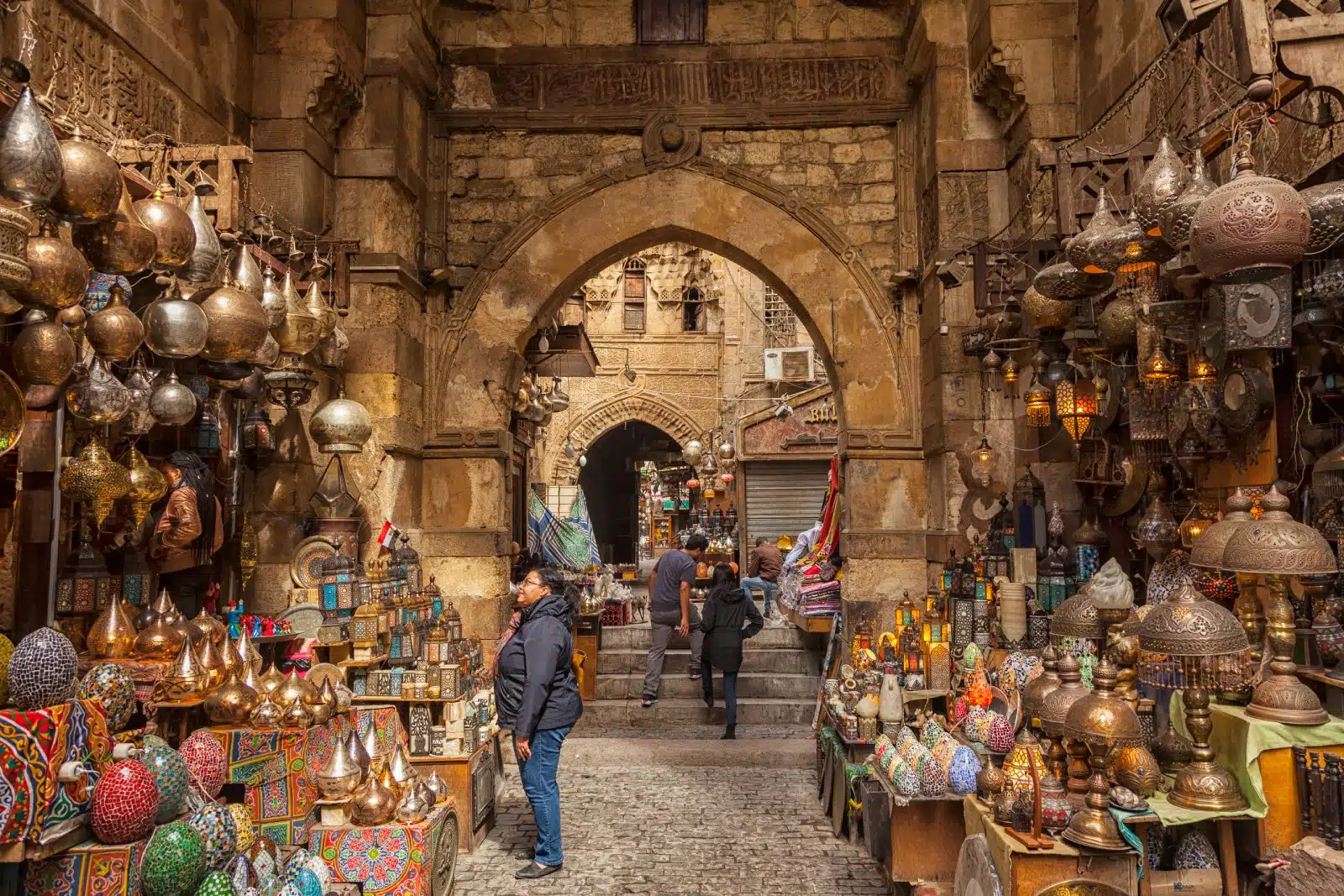
Image Credit: Shutterstock / Merydolla
Khan El Khalili, a major souk in the Islamic district of Cairo, is more than just a market; it’s a historical and cultural landmark. Founded in the 14th century, the bazaar is a labyrinth of narrow alleys lined with shops selling various traditional Egyptian crafts, spices, perfumes, jewelry, and souvenirs. The area is also known for its coffee shops and shisha bars, including the famous El Fishawi’s Café, which has served customers for over two centuries. Visiting Khan El Khalili is an immersive experience, offering a taste of Cairo’s vibrant commerce, craftsmanship, and community life in a setting that has changed little over the centuries.
Insider’s Tip: Practice your bargaining skills to get the best deals, and visit the historic El Fishawi’s Café for authentic Egyptian coffee.
4. Coptic Cairo
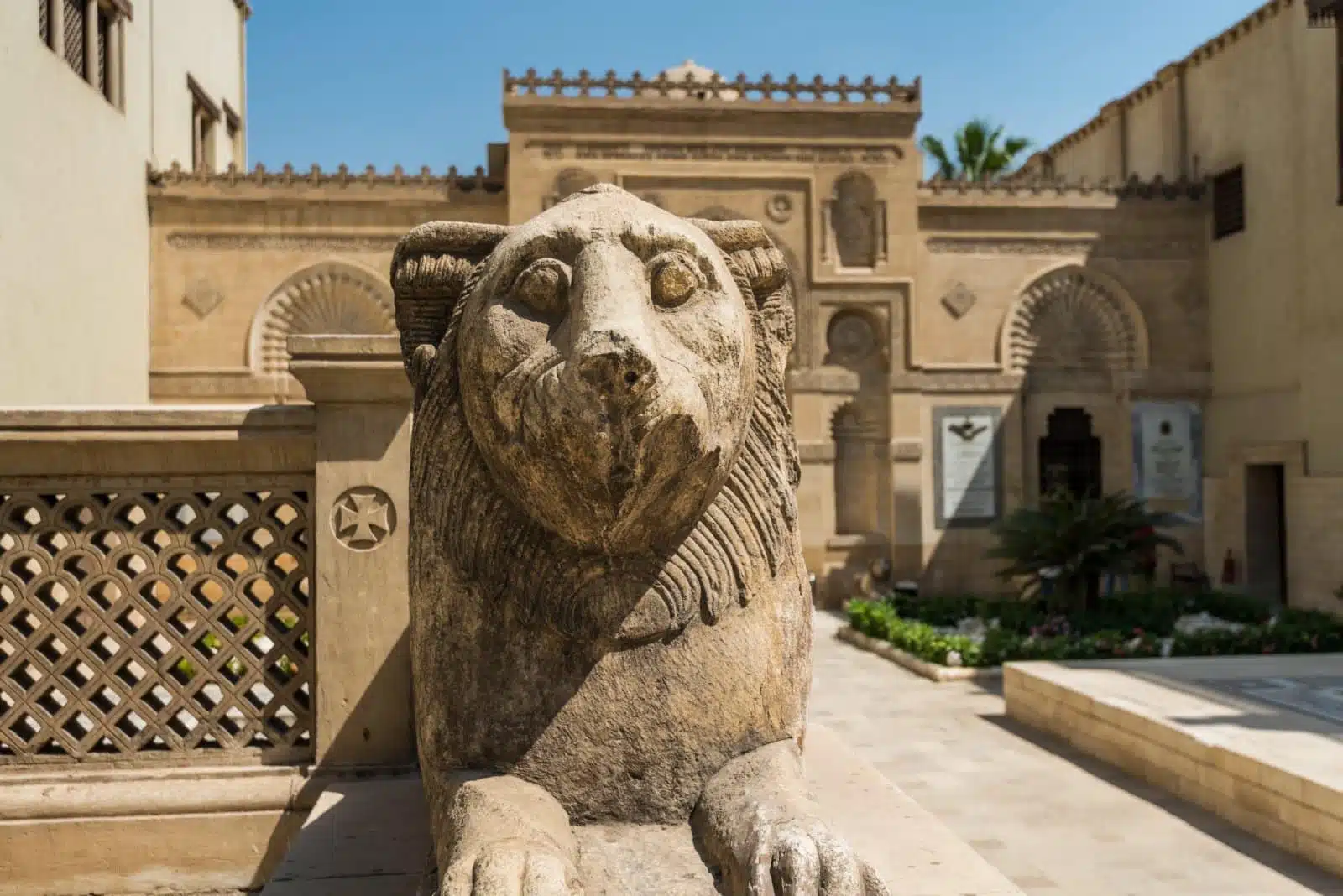
Image Credit: Shutterstock / Victor Jiang
Coptic Cairo is a unique part of the city, offering insight into Egypt’s Christian heritage. This area houses the Babylon Fortress, the Coptic Museum, the Hanging Church, and other ancient churches, monasteries, and synagogues, some of which date back to the early Christian period. The Hanging Church, built atop the gatehouse of the Roman fortress, is particularly notable for its architecture and the collection of Coptic Christian art. Coptic Cairo provides a window into the religious and cultural life of Egypt’s Christian community and showcases the continuity of worship and tradition in this ancient land.
Insider’s Tip: Visit the Coptic Museum to see an impressive collection of Coptic art and artifacts that span over 2,000 years.
5. The City of the Dead (Qarafa)
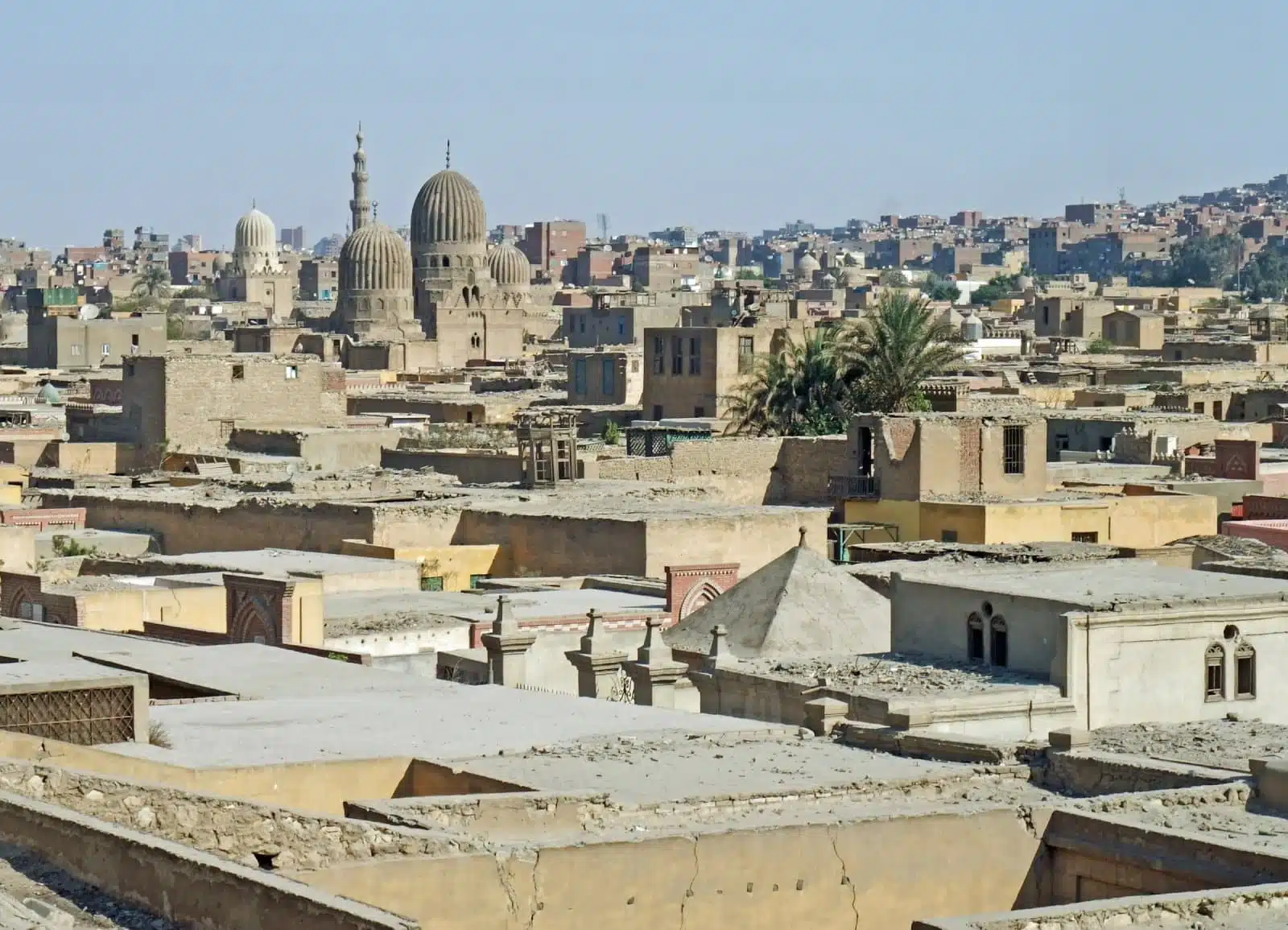
Image Credit: Shutterstock / SF photo
The City of the Dead, or Qarafa, is a vast Islamic necropolis that has been a burial ground and a residential area for centuries. Stretching over four miles, it is home to ornate mausoleums, mosques, and tombs dating from the Mamluk era to the present day. This living cemetery offers a unique perspective on Cairo’s history and approach to death and remembrance. The City of the Dead is a place of quiet and reflection, standing in contrast to the bustling streets of Cairo, and provides a profound insight into the city’s social and architectural history.
Insider’s Tip: Hire a knowledgeable guide to explore this area, as the historical context enriches the experience.
6. Rubbish City (Manshiyat Naser)

Image Credit: Shutterstock / leshiy985
Manshiyat Naser, often referred to as Rubbish City, is a distinctive area in Cairo known for its unique economy based on collecting and recycling the city’s waste. The Zabbaleen, or garbage collectors, have developed an efficient system to recycle up to 80% of the waste they collect, far surpassing many Western recycling programs. While facing significant socio-economic challenges, this community demonstrates remarkable resilience and ingenuity. The area is also home to the Cave Church of St. Simon, a significant Christian site carved into the Mokattam hillside, capable of seating thousands of worshippers. Visiting Rubbish City offers insight into a lesser-seen side of Cairo, highlighting the complexities of urban living and the potential for sustainable practices in unexpected places.
Insider’s Tip: While visiting Rubbish City offers a profound insight into Cairo’s socio-economic fabric, it’s essential to approach the community with respect and sensitivity.
7. Islamic Cairo
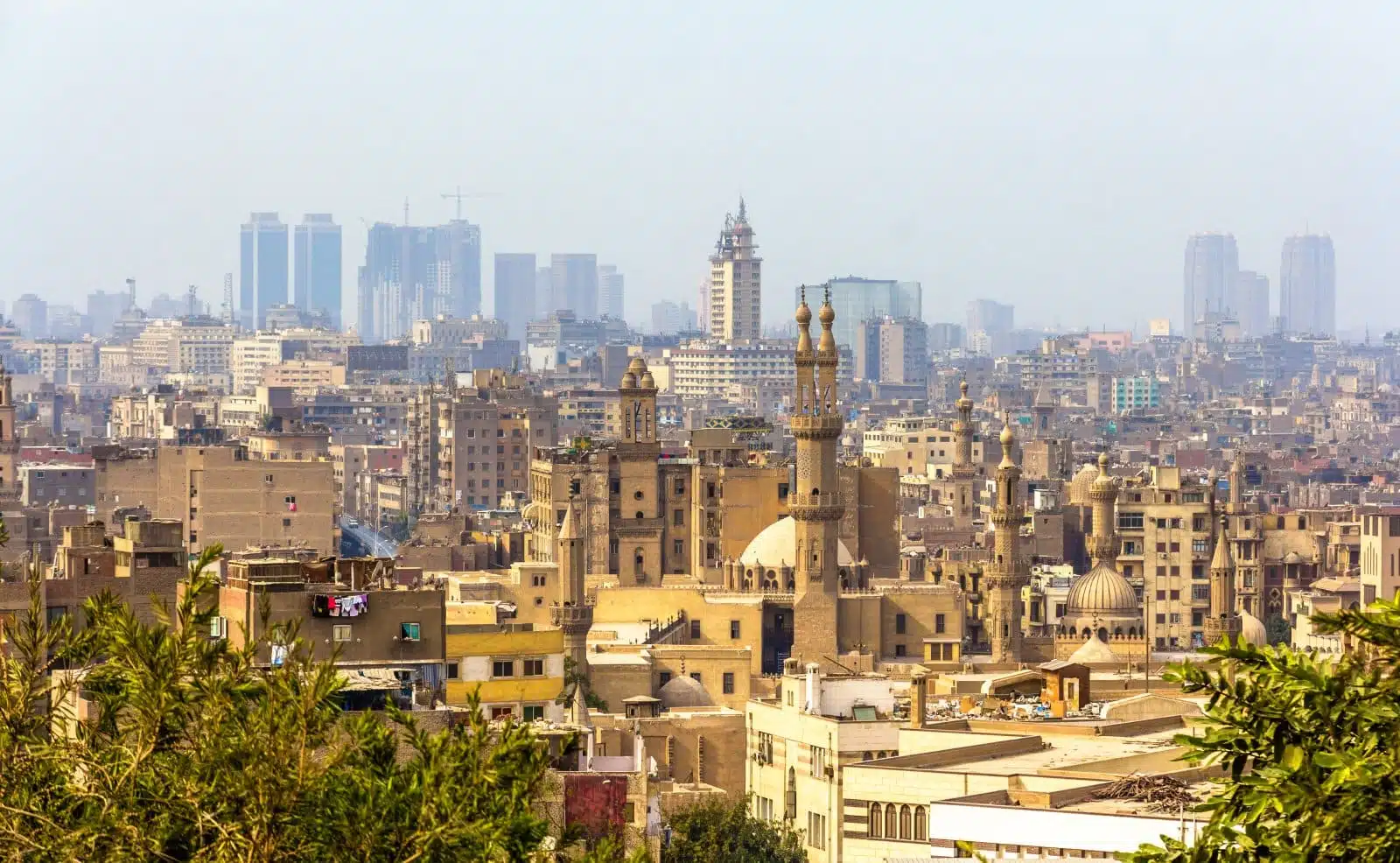
Image Credit: Shutterstock / Leonid Andronov
Islamic Cairo, designated a UNESCO World Heritage site, is not merely a district but the historical and spiritual heart of the city. This area boasts a dense concentration of medieval architectural treasures, including mosques, madrasas, hammams, and fountains dating back to the Fatimid, Ayyubid, and Mamluk periods. Highlights include the Al-Azhar Mosque, one of the oldest universities in the world, and the Sultan Hassan Mosque, a masterpiece of Mamluk architecture. Islamic Cairo is a living museum where visitors can explore the narrow lanes, discover hidden courtyards, and experience the daily rhythms of life in a neighborhood that has been continuously inhabited for centuries.
Insider’s Tip: Venture into the less crowded mosques and madrasas to find moments of tranquility and awe-inspiring views of the city from minaret balconies.
8. Saqqara Necropolis
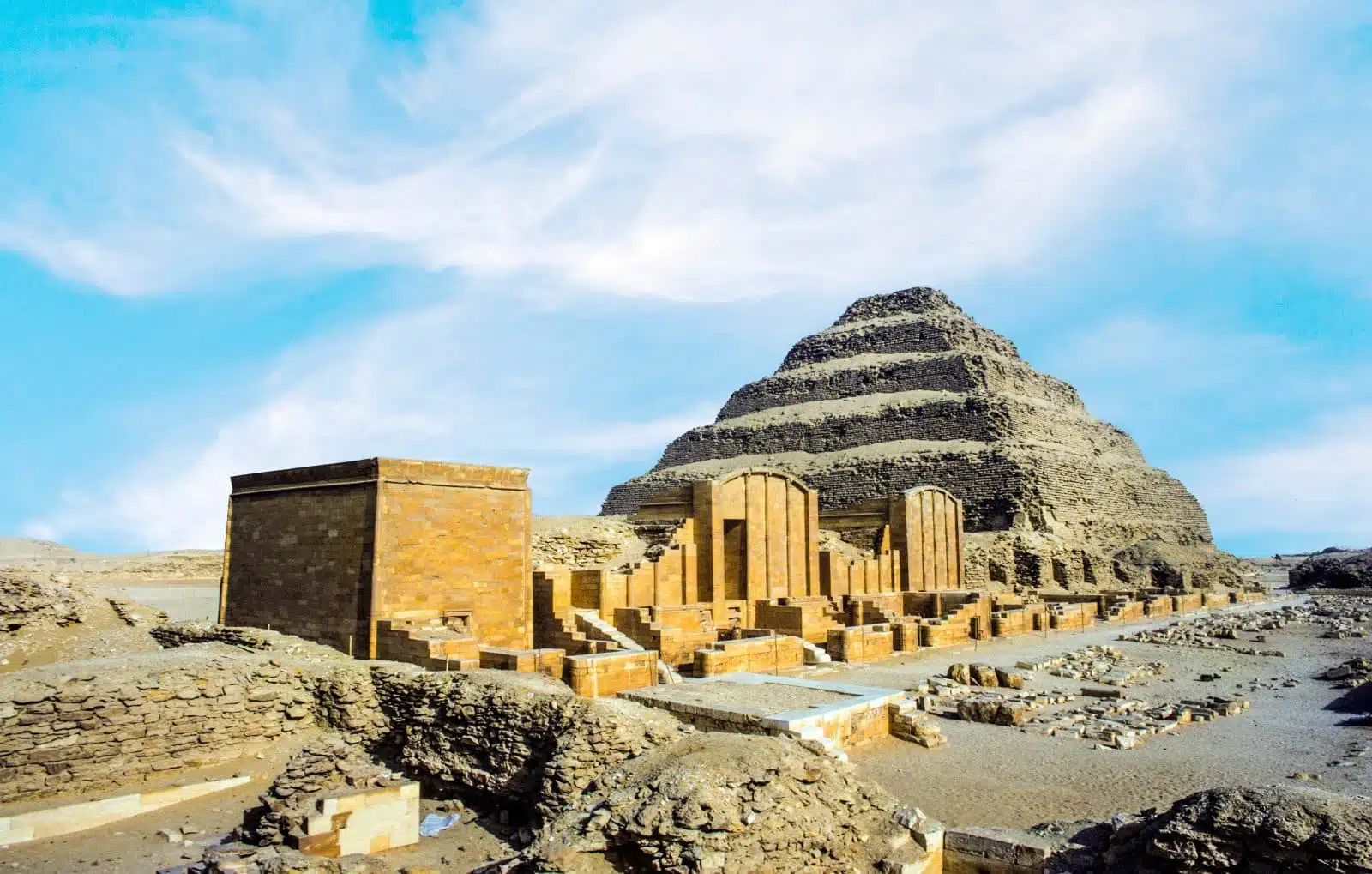
Image Credit: Shutterstock / travelview
Saqqara, located just south of Cairo, is one of Egypt’s most significant archaeological sites, serving as the necropolis for the ancient capital of Memphis. The site is home to the Step Pyramid of Djoser, the world’s oldest complete stone building complex, marking a revolutionary architectural design advance. Saqqara’s broad expanse contains countless tombs and burial sites, offering insights into ancient Egyptian mortuary practices and beliefs. The site’s importance lies in its architectural innovations and the wealth of art, hieroglyphs, and artifacts that provide a detailed record of life and death in ancient Egypt.
Insider’s Tip: Don’t miss the Tomb of Mereruka for its vivid reliefs depicting daily life in ancient Egypt.
9. The Saladin Citadel
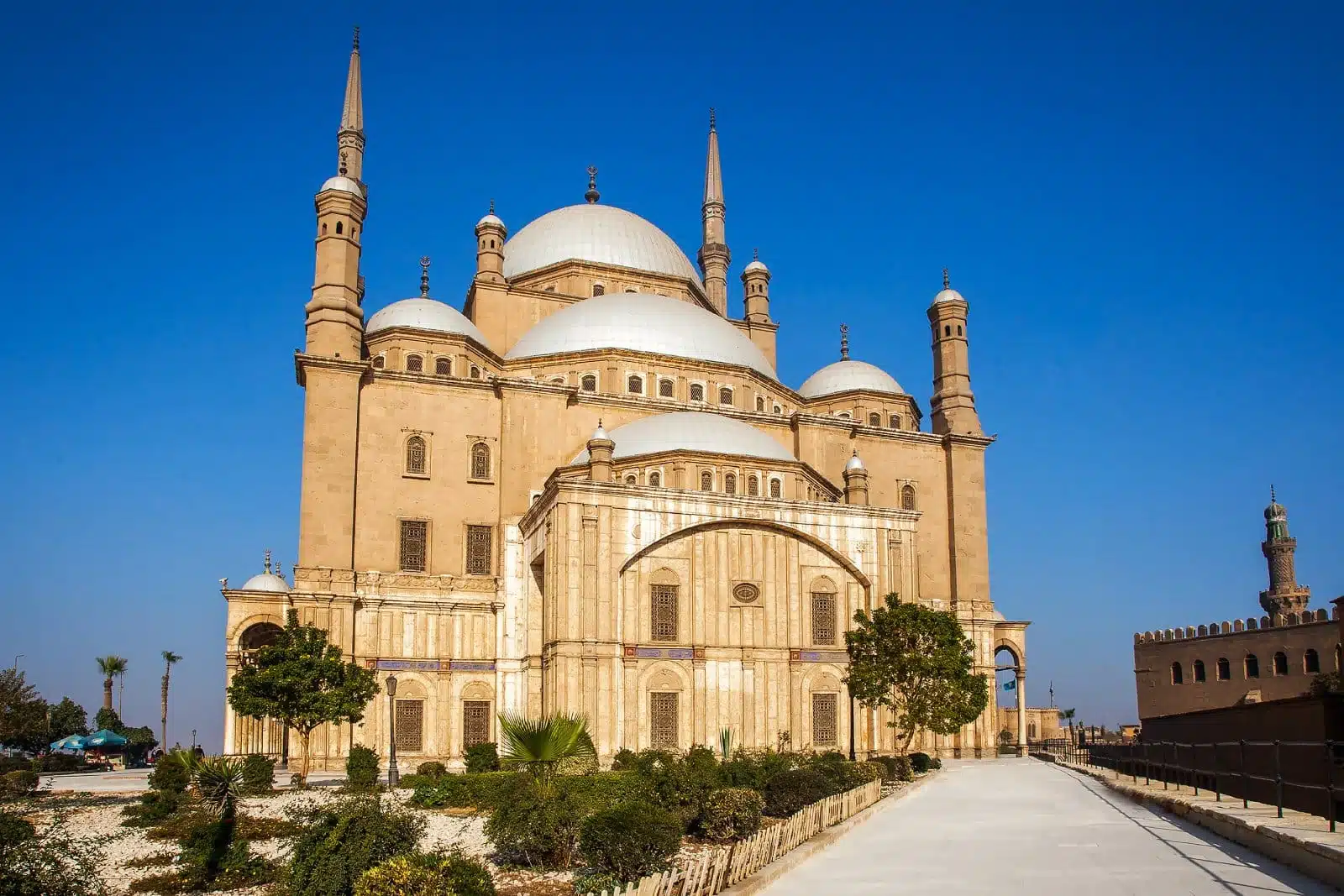
Image Credit: Shutterstock / Photo Spirit
The Saladin Citadel, perched atop the Mokattam Hills overlooking Cairo, is a fortress of historical and military significance. Built by Salah al-Din in the 12th century to protect the city from Crusaders, it has served various roles throughout its history, including a royal residence and a military garrison. The Citadel complex includes the Mosque of Muhammad Ali, known for its Ottoman-style architecture and commanding views of Cairo. The Citadel offers a panoramic vista of the city and serves as a focal point for understanding Cairo’s strategic importance through the ages.
Insider’s Tip: Visit near sunset to witness the city bathed in golden light, with the call to prayer echoing from the mosque.
10. The Hanging Church
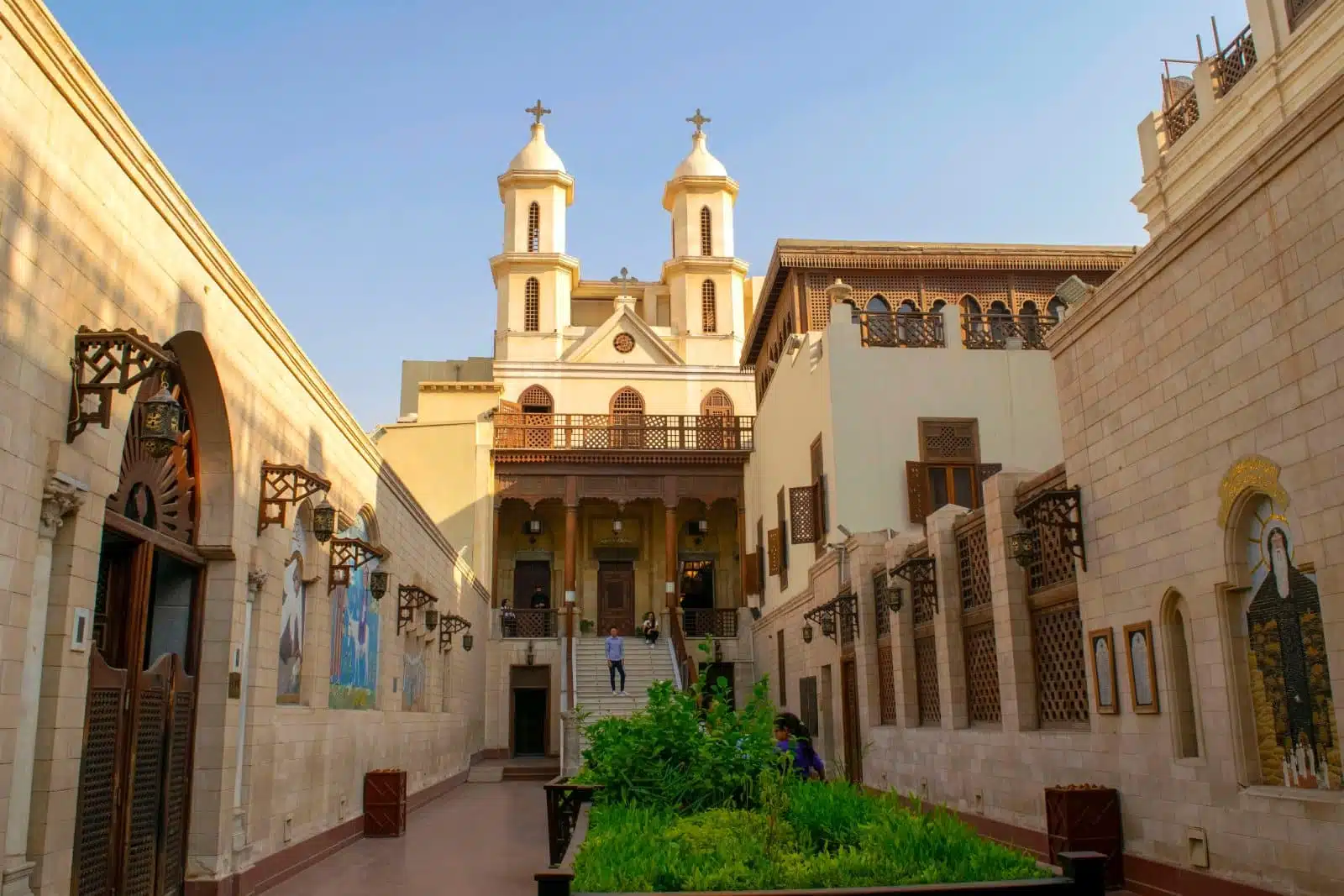
Image Credit: Shutterstock / ViktoriyaFivko
The Hanging Church, officially known as Saint Virgin Mary’s Coptic Orthodox Church, is one of Cairo’s most revered Christian sites. Built in the 7th century and named for its location above a gatehouse of Babylon Fortress, the church is a marvel of Coptic architecture, featuring a wooden roof in the shape of Noah’s Ark and intricate screenwork. Inside, the church houses a collection of icons, relics, and manuscripts that chronicle the history of the Coptic Church in Egypt. The Hanging Church is not just a place of worship but a symbol of the enduring presence of Christianity in Egypt.
Insider’s Tip: Look for the icon of the Virgin Mary, believed to have miraculous healing powers.
11. Al-Azhar Park
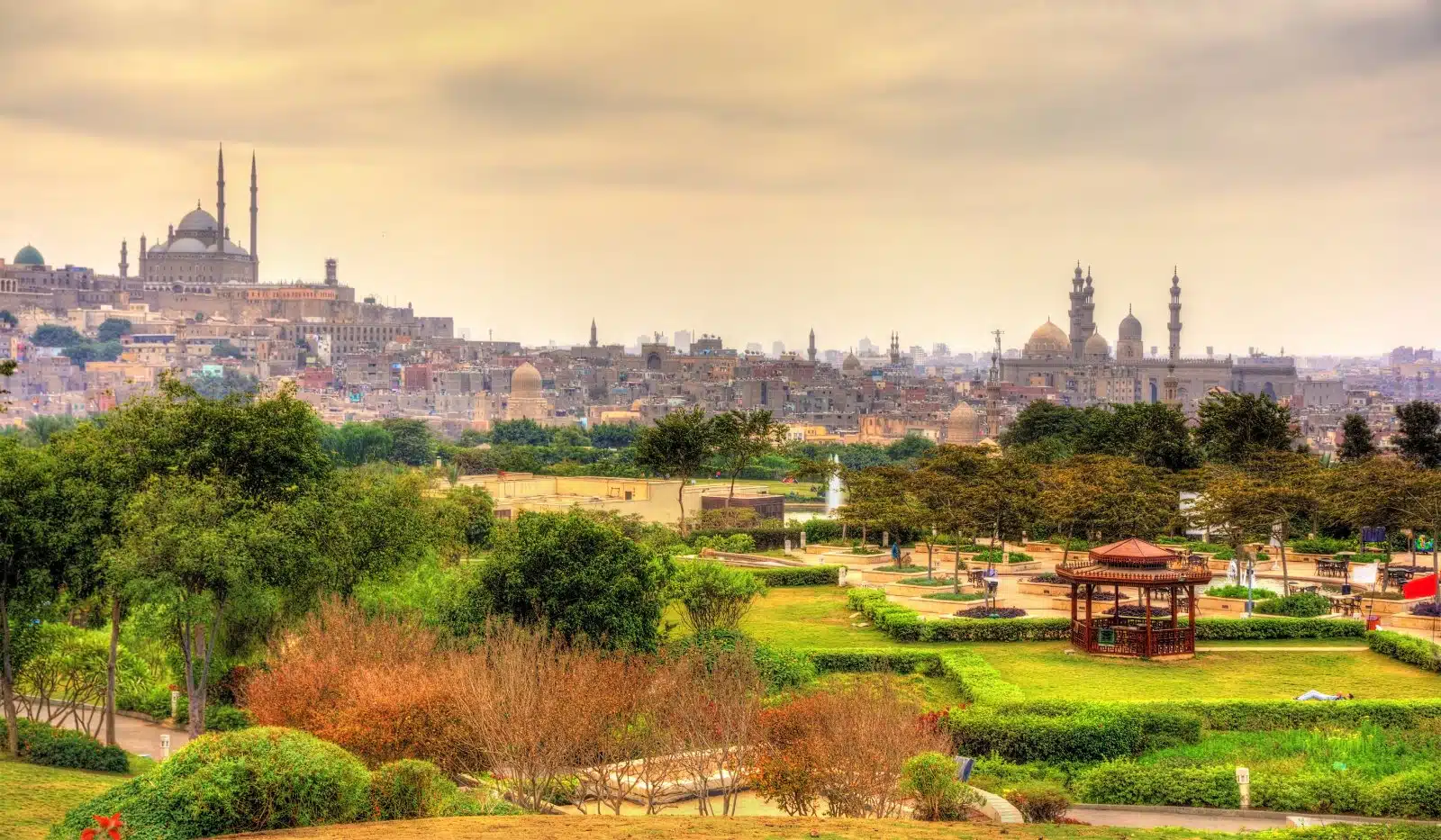
Image Credit: Shutterstock / Leonid Andronov
Al-Azhar Park is a testament to Cairo’s ability to blend history with modernity. Once a neglected area, it was transformed into a lush, expansive park, offering residents and visitors a much-needed green space. The park, with its carefully landscaped gardens, walkways, and water features, provides a serene escape from the urban hustle and bustle. It also offers stunning views of the Cairo skyline, including the Citadel and the Mosque of Muhammad Ali. Al-Azhar Park is a prime example of successful urban renewal, serving as a green lung for the city and a space for cultural events and family outings.
Insider’s Tip: Dine at the park’s restaurant for traditional Egyptian cuisine with a view of the illuminated city at night.
12. The Nilometer
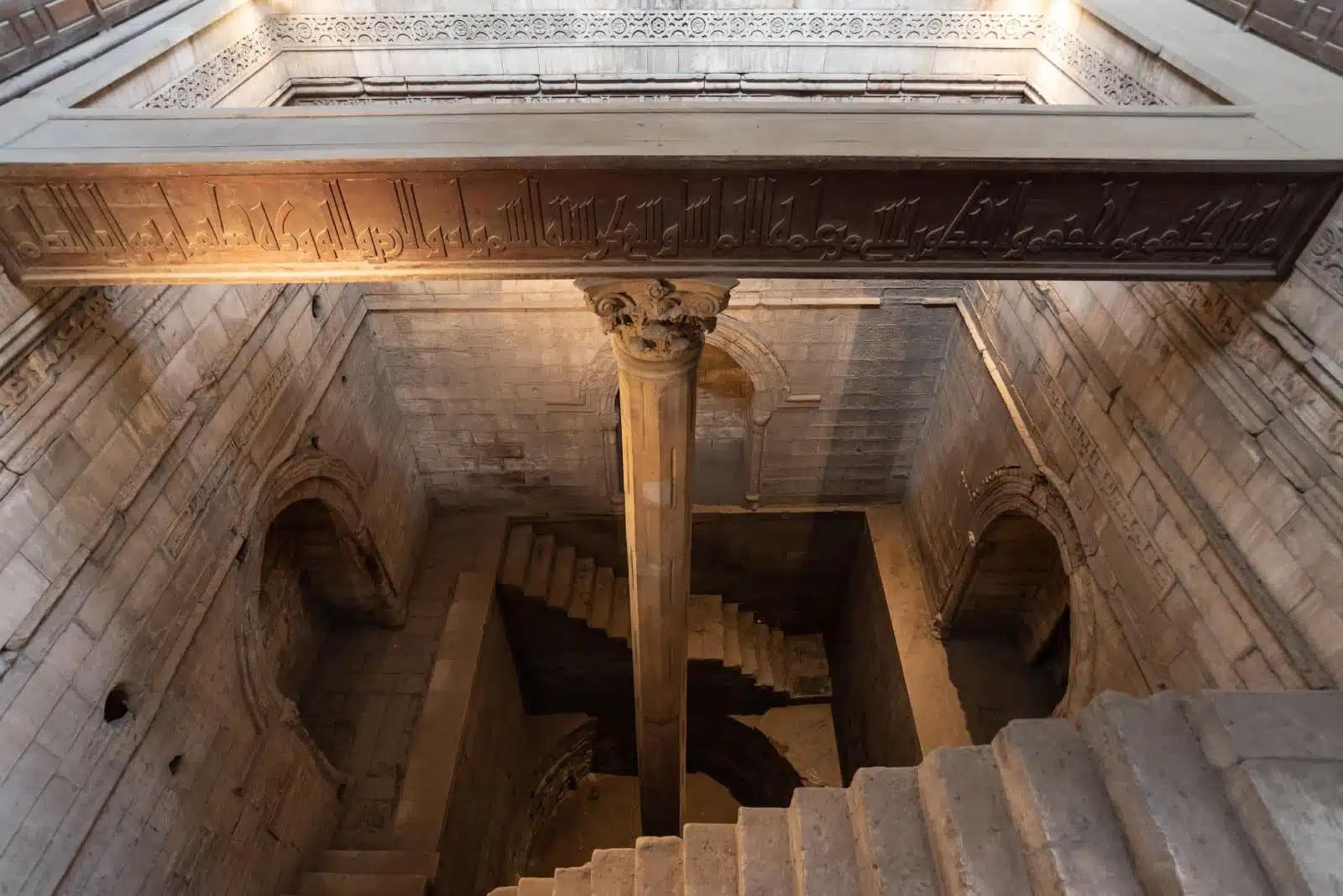
Image Credit: Shutterstock / John Wreford
The Nilometer on Rhoda Island is an ancient architectural marvel designed to measure the Nile River’s water levels. Dating back to the 9th century, this device was crucial for predicting the annual flooding, which was essential for agricultural planning in Egypt. The Nilometer consists of a deep well and a graduated column, allowing accurate readings of the river’s height. This site highlights the historical importance of the Nile to Egyptian civilization but also represents one of the earliest forms of scientific measurement. The Nilometer is a testament to the advanced understanding of hydrology and engineering in medieval Islamic society.
Insider’s Tip: Visit during the late afternoon when the play of light through its openings creates a serene ambiance.
13. Cairo Opera House
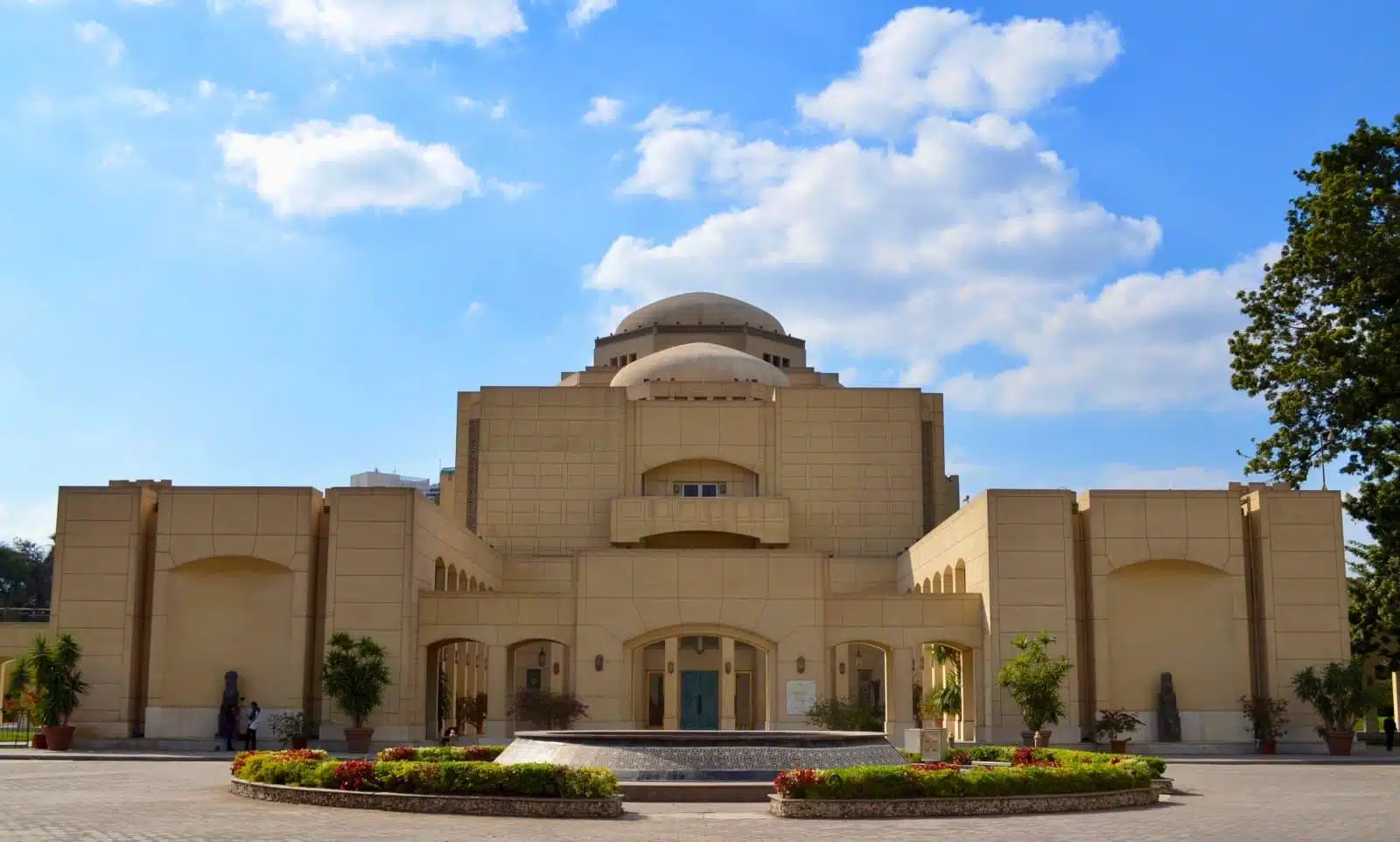
Image Credit: Shutterstock / Youssef Zakaria
The Cairo Opera House, situated within the National Cultural Center in the Zamalek district, is Egypt’s premier performing arts venue. It stands as a symbol of cultural renaissance, offering a diverse program of opera, ballet, symphonies, and modern theatre. The Opera House is not just a venue for performances but a cultural institution aiming to promote the arts and foster cultural exchange. Its modern architecture, spacious halls and state-of-the-art acoustics, makes it a focal point for cultural life in Cairo. Attending a performance here offers a glimpse into Egypt’s vibrant contemporary arts scene.
Insider’s Tip: Check the schedule in advance to catch a performance during your visit, offering a night of cultural immersion.
14. The Museum of Islamic Art
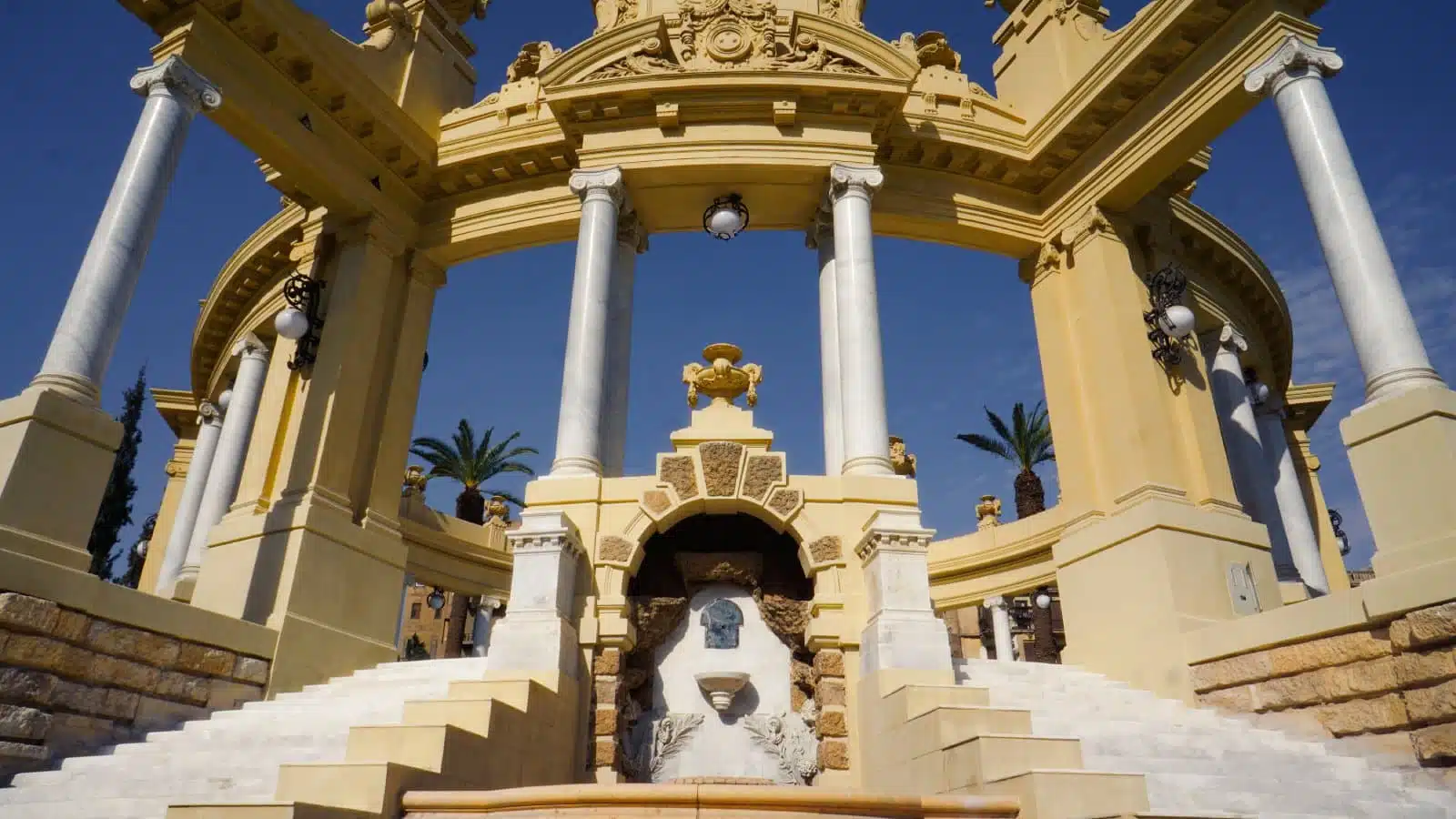
Image Credit: Shutterstock / Mostafa A Aly
The Museum of Islamic Art in Cairo is regarded as one of the greatest in the world for its comprehensive collection of Islamic artifacts, spanning over 1,400 years of history. The museum houses an extensive array of objects from across the Islamic world, including manuscripts, ceramics, textiles, and metalwork. The collection highlights the artistic achievements of Islamic civilizations and offers insights into daily life, scientific advancements, and the religious diversity within Islamic cultures. The museum’s exhibits are a testament to the complexity and richness of Islamic heritage, making it an essential visit for those interested in art, history, and culture.
Insider’s Tip: Allocate enough time to explore the museum’s vast collection, and don’t miss the astrolabes and Mamluk-era Qurans.
15. Dahshur
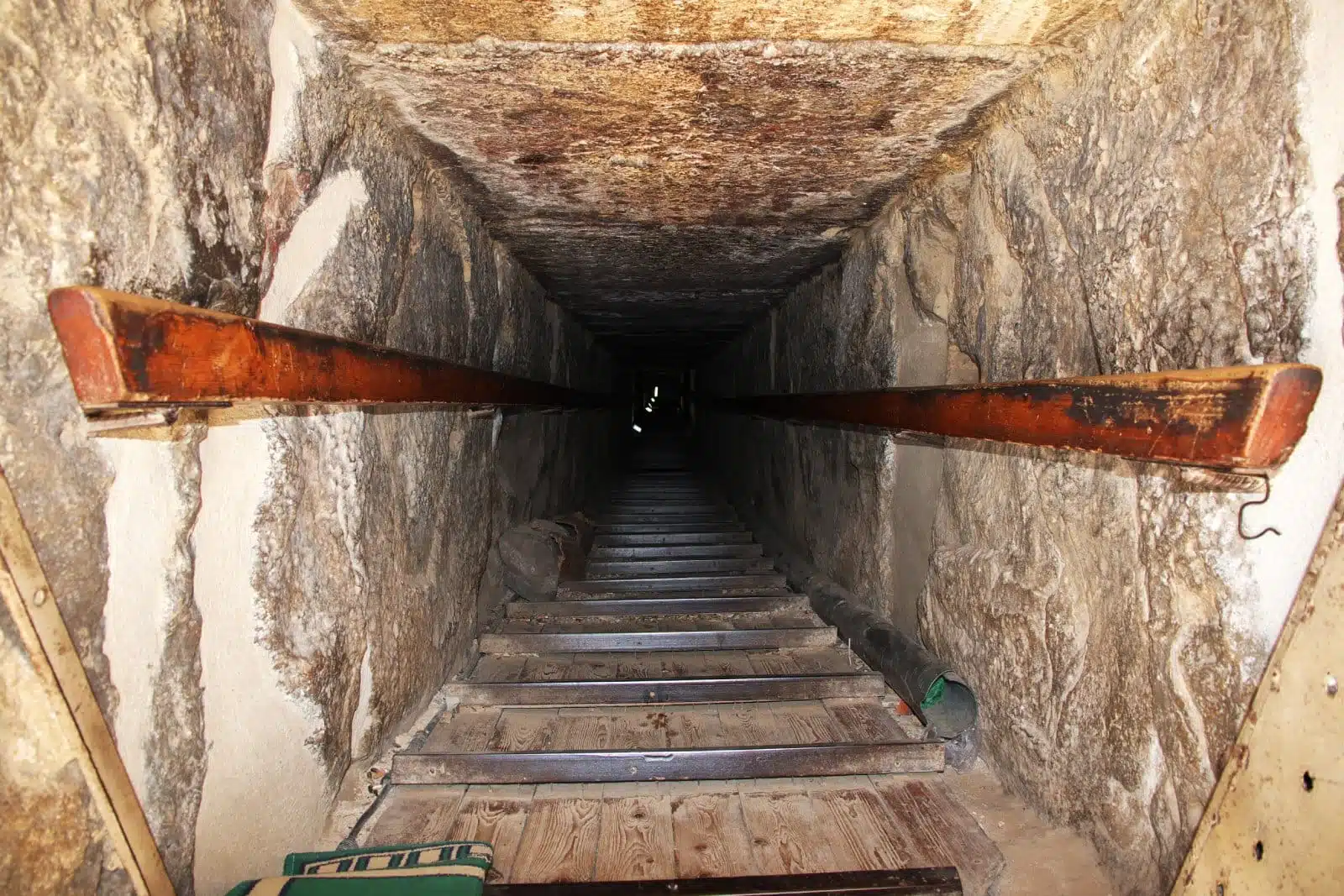
Image Credit: Shutterstock / Sergey-73
Dahshur is a royal necropolis located in the desert on the outskirts of Cairo, known for its several well-preserved pyramids, including the Bent Pyramid and the Red Pyramid. These pyramids represent significant advancements in ancient Egyptian architectural techniques, marking a transition from stepped to smooth-sided pyramids. Dahshur offers a more serene and less crowded experience compared to the Giza Plateau, allowing visitors to explore the pyramids and their surrounding structures in a more intimate setting. The site’s importance lies in its contribution to our understanding of ancient Egyptian funerary practices and the evolution of pyramid construction.
Insider’s Tip: Climb into the Red Pyramid’s inner chambers to experience the monumental scale of these ancient structures.
When to Travel

Image Credit: Shutterstock / Andrey_Popov
October to April is the best time to visit Cairo and explore its cultural treasures. During these months, the weather is cooler and more comfortable for sightseeing, with average temperatures ranging from 20°C to 25°C (68°F to 77°F). This period avoids the peak summer heat of May to September, when temperatures can soar above 35°C (95°F), making outdoor exploration less comfortable.
How to Get There

Image Credit: Shutterstock / More Than Production
To Cairo:
By Air: Cairo International Airport (CAI) is the primary gateway to Egypt and one of Africa’s busiest airports. It serves numerous international airlines offering direct and connecting flights from major cities around the world. Upon arrival, you can take a taxi, a private car, or a bus to the city center or your accommodation. There are also car rental services available at the airport.
By Road: If you’re already in Egypt or neighboring countries, you can reach Cairo by bus or car. Egypt’s road network is extensive, connecting Cairo with major cities like Alexandria, Luxor, and Aswan. Several bus companies operate comfortable, air-conditioned coaches.
By Train: Egypt’s railway network offers services between Cairo and other major cities, including Alexandria, Luxor, and Aswan. The Ramses Station in Cairo is Egypt’s main train travel hub.
Navigating to Cultural Treasures:
Within Cairo: Many of Cairo’s cultural treasures, like the Egyptian Museum, Coptic Cairo, and Islamic Cairo, are accessible by taxi or through rideshare apps, which are widely used in the city. For a more local experience, the Cairo Metro offers a fast and affordable way to get around, with stops near key attractions such as Coptic Cairo.
To Giza Pyramids: The Giza Pyramid complex is located just outside Cairo. You can get there by taxi, bus, or by joining a guided tour. The journey from Cairo city center takes approximately 30 minutes by car, depending on traffic.
To Saqqara and Dahshur: These sites are located further from the city and are best reached by taxi or guided tour. Public transport options are limited, and a private vehicle offers more flexibility to explore these less-visited areas at your own pace.
The Bottom Line

Image Credit: Shutterstock / kitzcorner
Planning your visit to Cairo during the cooler months will make exploring its ancient wonders and cultural treasures more enjoyable. Cairo’s extensive history and vibrant present are accessible through its international airport and well-developed transport infrastructure, making it a compelling destination for travelers seeking to immerse themselves in the richness of Egyptian heritage. Whether you’re marveling at the ancient pyramids, wandering through historic markets, or discovering the city’s modern rhythm, Cairo promises an unforgettable journey into the heart of Egypt.
More From The Green Voyage
Top 10 Trending Travel Destinations 2024
6 Essential Banking Apps for International Travel – Managing Your Finances on the Go
Traveling With Kids – 10 Tips to Create Memorable Family Holidays
The post 15 Cultural Treasures of Cairo 2024 first appeared on The Green Voyage.
Featured Image Credit: Shutterstock / AlexAnton.
For transparency, this content was partly developed with AI assistance and carefully curated by an experienced editor to be informative and ensure accuracy.
Tips for Trip Success
Book Your Flight
Find an inexpensive flight by using Kayak, a favorite of ours because it regularly returns less expensive flight options from a variety of airlines.
Book Your Hotel or Special Accommodation
We are big fans of Booking.com. We like their review system and photos. If we want to see more reviews and additional booking options, we go to Expedia.
You Need Travel Insurance!
Good travel insurance means having total peace of mind. Travel insurance protects you when your medical insurance often will not and better than what you get from your credit card. It will provide comprehensive coverage should you need medical treatment or return to the United States, compensation for trip interruption, baggage loss, and other situations.Find the Perfect Insurance Plan for Your Trip
